Editor’s Note: This post was originally published on July 22, 2022 and has been updated on July 1, 2024 to include new information and insights.
Not sure what the difference is between nutraceuticals, supplements, and functional foods? You’re not alone. These terms are often used interchangeably, even by experts in the field. This post will clear your confusion by breaking down each term and providing examples.
Both supplements and functional foods are a category of nutraceuticals. Despite all falling under the same umbrella, each of the terms has its own specifics, market trends, legal definitions, regulatory acts and bodies, and history, which the paragraphs below explore.
What are nutraceuticals?
Nutraceuticals are bioactive natural chemical compounds of whole foods that can promote health, prevent disease, and provide general medicinal benefits.
Nutraceuticals don’t have an official definition in the U.S., however, Health Canada has defined them as “a product isolated or purified from foods, and generally sold in medicinal forms not usually associated with food and demonstrated to have a physiological benefit or provide protection against chronic disease”.[1]
These food products provide health benefits beyond the traditional nutrients (e.g., include extra phytonutrients, are more bioavailable) and can come in many different forms, including capsules, tablets, powders, energy bars, drinks, and more.
History of nutraceuticals
The word “nutraceutical” stems from the words “nutrition” and “pharmaceuticals”, and was coined by Dr. Stephen DeFelice in 1989. Ever since then, the word has been commonly used in marketing, however, it still has no regulatory definition in the U.S. There have been proposals by doctors, pharmacists, and other scientists to regulate it with a clear definition (e.g., Kalra’s 2003 definition or the definition in The Pharmaceutical Journal), but the terminology remains loosely defined.
Nutraceuticals market size, growth, and trends
The global nutraceuticals market size was valued at $317.22 billion in 2023 and is expected to expand at a compound annual growth rate (CAGR) of 9.6% from 2024 to 2030.
Dietary supplements are a steadily growing market segment, while functional foods, and on a slightly smaller scale functional beverages, are growing exponentially.
The market is being driven by a rising geriatric population, consumer awareness, the population’s high educational level, preference for personalized nutrition, and a mentality toward disease prevention.
Examples of nutraceuticals
An easy way to differentiate a nutraceutical from a supplement is the clear source of a nutraceutical substance. For instance, it is clearly stated what collagen (a nutraceutical) is made from vs. it’s not immediately clear what D3 (a supplement) is made from. Here are a few examples of nutraceuticals to demonstrate that:
- fermented black garlic (aged and fermented garlic)
- collagen peptides (produced from beef bones and other bovine coproducts)
- curcumin (the substance in turmeric)
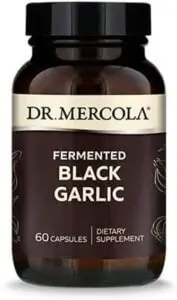
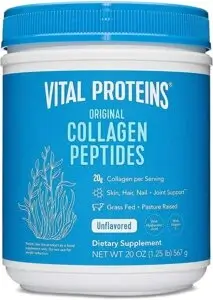
What are supplements?
Supplements are legally classified as foods, although not considered conventional foods that are able to form a balanced diet on their own. Another definition sees dietary supplements as products that contain one or more of the following ingredients – a vitamin, a mineral, an herb or another botanical, an amino acid, or a dietary substance – meant to supplement an individual’s diet. Supplements are usually ingested in capsule, tablet, liquid, or powder form.
Examples of dietary supplements
- vitamins, such as B12, D, E, C, and biotin
- herbs like echinacea or ashwagandha
- minerals; magnesium, calcium, iron
- glucosamine
- probiotics
- fish oil
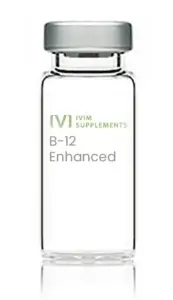
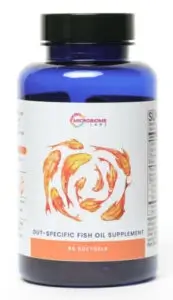
What are functional foods?
Functional foods are another subset of nutraceuticals. These are food products that promise to provide a specific health benefit based on their ingredients. While some countries, such as Japan and European countries, have regulations stating that functional foods can only contain natural ingredients, such products marketed in the U.S. can also contain ingredients that are products of biotechnology.
American Dietetic Association (ADA) defines further divides functional foods into 4 categories.[2]
- whole foods (conventional functional foods) (e.g., sauerkraut, green tea…)
- modified foods
- fortified foods (e.g., calcium-fortified orange juice or iodized salt)
- enriched foods (e.g., folate-enriched breads)
- enhanced foods
- medical foods (such as high-calorie drinks for those recovering from eating disorders)
- foods for special dietary use (such as gluten-free or lactose-free foods, weight-loss foods, etc.)
Examples of functional foods
While all the products from the list above are technically functional foods, health-conscious eaters mostly focus on whole foods and enhanced foods. Fortified and enriched foods have proven unnecessary and even dangerous in some cases (for example, iron-fortified cereals and baby food[3]).
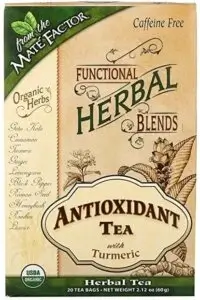
Some examples of enhanced functional foods are:
- functional teas – either in loose leaf or teabag, or packaged as a drink – that combine green or black tea with other bioactive compounds, such as turmeric and black pepper, or lemon and ginger
- other functional beverages (shots, shakes, juices, coconut water, etc.)
- functional cereal or muesli and bars
- functional quick meals
- powder blends with proteins, amino acids, botanicals, and herbs
Regulations for the sale of nutraceuticals, supplements, and functional foods
It is important to note that the FDA regulates both dietary supplements[4] as well as products marketed under the terms “functional foods” and “nutraceuticals”[5] as food, not as drugs. They, however, don’t provide separate definitions or regulatory acts for the latter two, only for the supplements.
Due to being classified as foods, nutraceuticals, supplements, and functional foods cannot contain health claims. Most countries, including the U.S., only allow medical claims for medicinal products which require a medical license.
Conclusion
Nutraceuticals are substances that have both therapeutic and nutrient effects. They are compounds isolated from whole foods.
Dietary supplements are substances in a capsule, tablet, liquid, or powder form that have healing or health-maintaining properties, without the therapeutic benefits of a drug. They are stand-alone nutritional compounds, such as a vitamin or a mineral.
Functional foods are products marketed to provide specific health benefits by combining certain foods, herbs, and spices to increase their bioavailability and provide the best possible nutritional value for their calorie count.
Learn More
Discover how Suggestic is powering advanced telehealth solutions for precision health and personalized nutrition.
References
| 1 | Health Canada (2019). ARCHIVED – Policy Paper – Nutraceuticals/Functional Foods and Health Claims On Foods – Canada.ca. [online] Canada.ca. Available at: https://www.canada.ca/en/health-canada/services/food-nutrition/food-labelling/health-claims/nutraceuticals-functional-foods-health-claims-foods-policy-paper.html |
|---|---|
| 2 | American Dietetic Association (2009). Position of the American Dietetic Association: Functional Foods. Journal of the American Dietetic Association, 109(4), pp.735–746. doi:10.1016/j.jada.2009.02.023 |
| 3 | Mailing, L. (2018). The problem with iron supplements and iron-fortified foods. [online] Lucy Mailing, Ph.D. Available at: https://www.lucymailing.com/the-problem-with-iron-supplements-and-iron-fortified-foods |
| 4 | FDA (2019). Dietary Supplements. [online] Fda.gov. Available at: https://www.fda.gov/food/dietary-supplements |
| 5 | FDA (2019b). Food Labeling & Nutrition. [online] U.S. Food and Drug Administration. Available at: https://www.fda.gov/food/food-labeling-nutrition |




